Layers Clothing: How to Use It to Survive in Any Environment
It’s not too hard to imagine a scenario in which you’re cold and wet, shivering and trudging down a seemingly endless track.
Most of us have been there before in fact, we set out to climb a mountain, the sun was shining the sky was blue but then the storm came in and turned us into a soggy spectacle, grumpily wishing for home.
It’s an all too common scenario, but one that could easily be avoided when you know how to effectively use layers clothing to adapt to any environment.
[the_ad_group id=”21″]
Wearing layers is essential when out and about or partaking in outdoor sports, but it is also wise to consider keeping a stash of sensible clothes, should you ever find you need to leave the warmth of your home in an emergency situation.
It is a very good idea to have the best clothing to suit any environment prepared in advance. Below we will discuss the basics of wearing layers, the most suitable materials to use, how to dress best for various environments and common mistakes and how to avoid the pitfalls.
The Importance of Layering
Whether you are spending the day hiking in the forest, or cycling in a race, whatever the weather, wearing layered clothing will certainly improve your comfort while out and about.
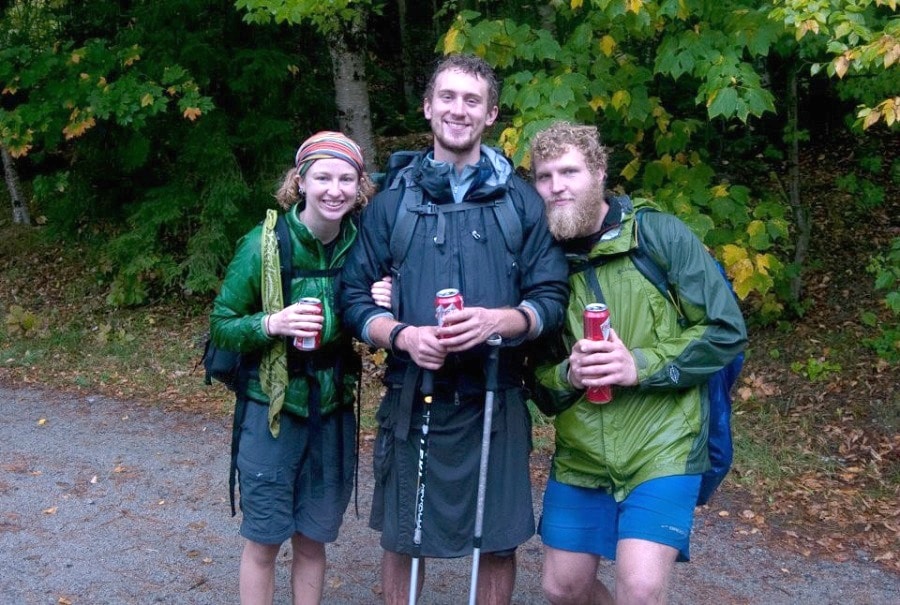
Many are the times when people neglect to think about wearing the best clothes for what they will be doing, opting to put on a cotton t-shirt and thin waterproof jacket in a summer storm for example.
These clothes may keep you dry initially, but as soon as you start exerting energy, it won’t be long before you’re cooking from the inside, and that nice cotton t-shirt is soaked in sweat, and the sleeves of your thin jacket are sticking to your arms. There are several common mistakes that people tend to make when dressing for outdoor activities:
- Putting on the thickest sweater you can find in cold weather and assume that this will keep you warm and comfortable
- Sticking with just a cotton t-shirt while exercising in hot weather
- Using just a thin waterproof jacket on top of a t-shirt when hiking in warm, but damp conditions
- Wearing denim while hiking
A general rule of thumb when dressing for outdoor activities is to avoid cotton, especially against the skin. This is because it retains moisture, such as sweat and takes a long time to dry out, and all the time your cold, soggy cotton shirt is touching your skin you will be losing potentially essential body heat.
See also: What to Wear Hiking: Clothes According to Each Season
Denim is a particularly poor choice, as aside from being a cotton product, it’s also heavy, tight and takes an exceptionally long time to dry, and may even freeze in cold conditions.
The Basic Principles of Wearing Layers
The general idea behind wearing several layers is to use your own body heat to keep yourself dry, comfortable and at an appropriate temperature, while a wind and waterproof outer layer will protect you from the elements. In a nutshell, air gets trapped between the layers, insulating your body.

Most the time you will want to wear layers on your upper body, although it is not uncommon to wear layers of pants or gloves.
There are several advantages to wearing layers of clothes;
- You can control your temperature by adding or removing layers as required, consider yourself an onion
- Thinner layers pack up smaller than one thick sweater, and so take up less space
- You keep sweat away from your skin, preventing clothes from sticking to you
- You are able to stay warm in cold conditions, and cool in warm conditions
It’s not quite as simple as putting on as many different clothes on top of one another, the materials you use are of great importance. Let’s first look at the three essential layers:
The base layer
This should be fairly lightweight and snug, but not too tight. Its primary function is to keep moisture away and off your skin by using capillary action and transferring it to the next layers.
The material can be natural such as wool – merino is excellent – or synthetic materials, such as microfiber, designed to wick away moisture. Find out the excellent features of merino wool by checking out our article on this topic. Cotton should be certainly be avoided, as this layer needs to be fast drying and capable of retaining heat, whereas cotton will hold moisture and soon become cold.

They can come in varying thicknesses and have insulating properties of their own, but for anyone exerting themselves, a thinner base layer is more practical in order to avoid overheating. There are several types available including those with zip necks, which add another temperature regulating tool.
The mid layer
It is the layer designed to keep you insulated by trapping air between it and the other layers, keeping you warm while out and about. It should be loose enough to leave space for air to fill the gap, but not so loose that further moisture wicking isn’t possible.
Depending on the conditions you are out in, the mid layer could be anything from a light body warmer to a thicker woolen sweater. Of course, you are not limited to just one mid layer, and in particularly in cold weather the more the better. More layers equal more insulation.
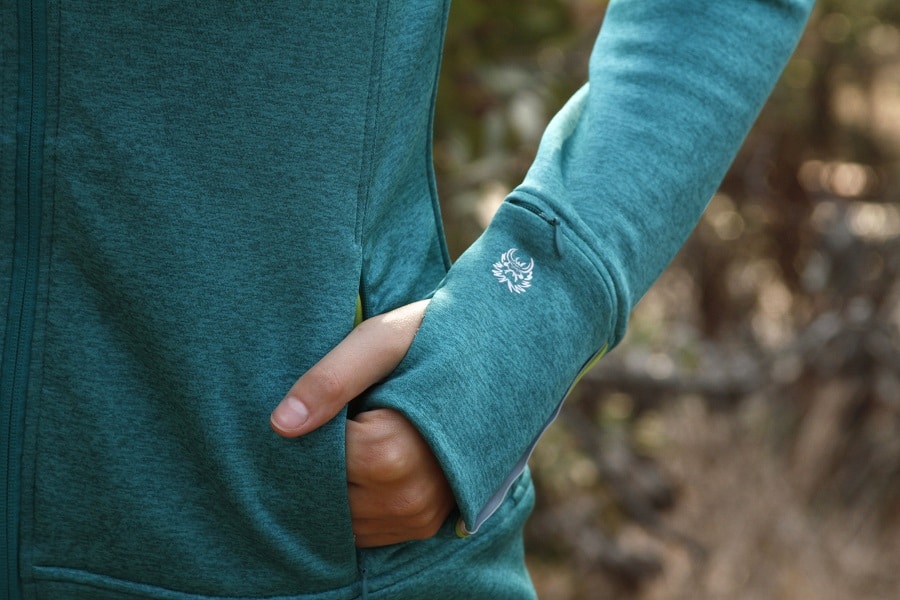
Similarly, a mid layer can act as an outer layer in warmer weather. Suitable materials for the mid layer include wool, fleece, and synthetic fiber fills.
The outer, or shell layer
The final piece of the puzzle designed to protect you from the elements. Ideally, it should be breathable and wind and waterproof, however, in reality, it’s not very common for an item of clothing to successfully achieve all three of these properties.
A Gore Tex jacket is a good option and comes as close as realistically possible to meeting these three requirements. There are two common types of “shells”, soft and hard. The soft is generally made of a more flexible material and will be more breathable.
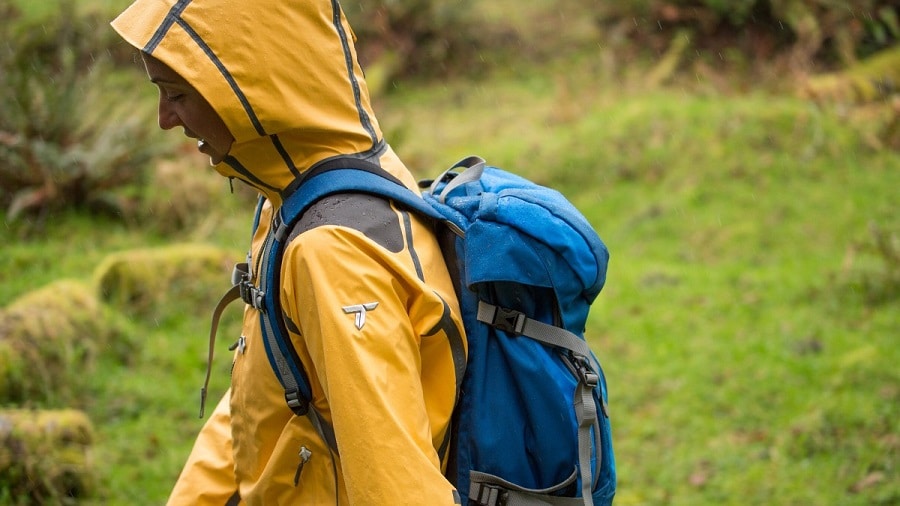
It will also be water and wind resistant, but not proof, while the hard shell will be firmer, heavier and offer waterproof, windproof and a certain amount of breathability. See our comparative article between Gore-tex and Hyvent to give you more options. The outer layer is not always necessary of course, and if you are expecting to sweat a lot, but at the same time are confident you won’t get caught out in rain or wind, you should avoid a waterproof layer with no moisture wicking properties, such as a plastic raincoat, altogether.
The Most Common Materials Used
Now that we have established the basics of wearing layered clothes, it’s time to take a closer look at the best materials to use, and their advantages and disadvantages.
Cotton, as previously mentioned is not the most suitable material for outdoor activities. It has poor insulating abilities and holds moisture, to such an extent it can actually be very dangerous in colder conditions and may encourage hypothermia.
For instance, you may have an accident while hiking and have to spend a night in the cold. Had you worn a cotton base layer and sweated all day, this damp material will soon get very cold, and draw your precious body heat away from you, no matter how many other layers you have on top. Denim is also a no-no for the similar reasons.
It is comfortable however, and may be suitable for warm weather when you don’t expect to exert a lot of energy and are sure you will not require insulation.
| Advantages: ● Cheap ● Comfortable | Disadvantages: ● Poor insulation ● Holds moisture |
Wool is a traditional material that has been used to keep people warm and to some extent dry for centuries. It has excellent insulation properties and will work well even when wet. It is capable of absorbing and wicking moisture, without feeling damp, even though it may be fairly soaked.
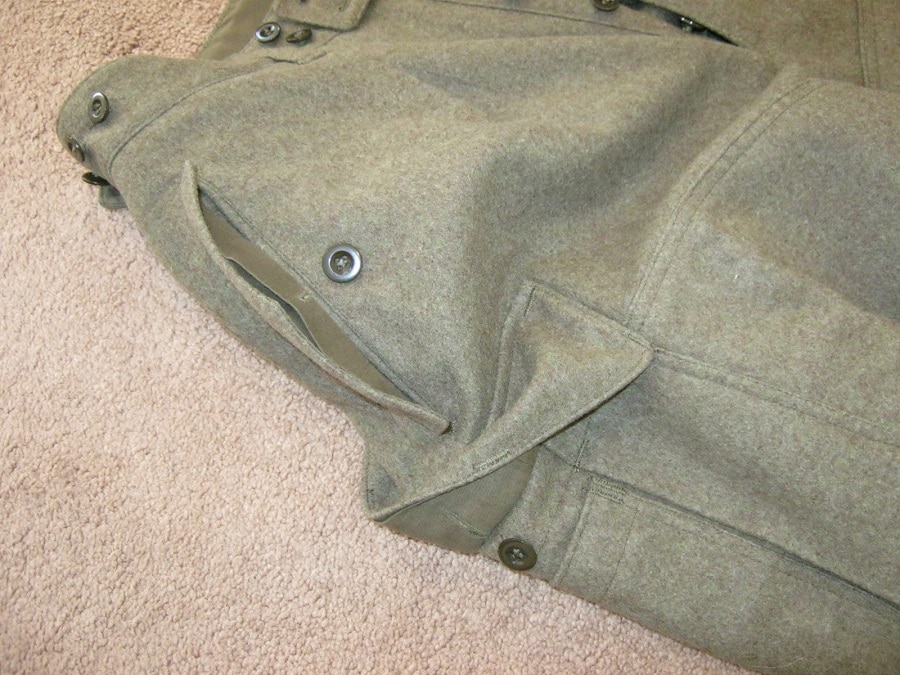
It is also able to repel water to some extent. It makes an excellent material for any mid layer and can also be used for base layers, though the way it feels on the skin can vary, with some woolen clothes being fairly uncomfortable and itchy, however, merino wool is softer.
| Advantages: ● Excellent insulating properties ● Odor resistant ● Moisture wicking abilities ● Water repellent | Disadvantages: ● Quite expensive, in particular for base layers ● Can feel itchy against the skin |
Synthetic Fleeces share many properties with wool and provide a good level of insulation. They are generally fairly light, even the thicker fleeces are not too heavy, and do not absorb much moisture.
[the_ad_group id=”22″]
They are effective even when wet and will dry relatively quickly. Generally made from PETE (Polyethylene terephthalate) they make an excellent mid layer.
| Advantages: ● Dries quickly ● Moisture resistant ● Effective when wet ● Cheap ● Light | Disadvantages: ● Prone to holding a static charge, beware!
|
Synthetic materials such as polyester or microfiber can be an excellent choice for base layers as they generally have very good moisture wicking properties and will keep the sweat off your skin. They work perhaps too efficiently, as they can also absorb the body odor-inducing fatty acids, quickly stinking up your base layer.

On the plus side, these materials are easily treated with anti-bacterial agents helping to reduce body odor. Other finishes can be added such as insect repellents, which can come in useful in certain environments.
| Advantages: ● Great moisture wicking ● Can apply specialist finishes ● Cheaper than natural products | Disadvantages: ● Prone to smelling if not treated
|
Plastic is used for the construction of traditional raincoats. While it offers excellent waterproofing, it has absolutely no breathability and you may soon find yourself in a sweat suit of sorts. To counter this, most rain coats are long with wide open bottoms to encourage air circulation.
The material is also fairly thin and heavy and is not the most comfortable for carrying out outdoor activities in.
| Advantages: ● Fantastically waterproof ● Wide bottoms encourage air circulation ● Affordable | Disadvantages: ● Not breathable ● Heavy ● Not always comfortable
|
Down (duck or goose) is one of the best natural insulators. It packs up very small and will keep you warm, while not being overly bulky. It’s also incredibly light and garments stuffed with down are normally very comfortable to wear.
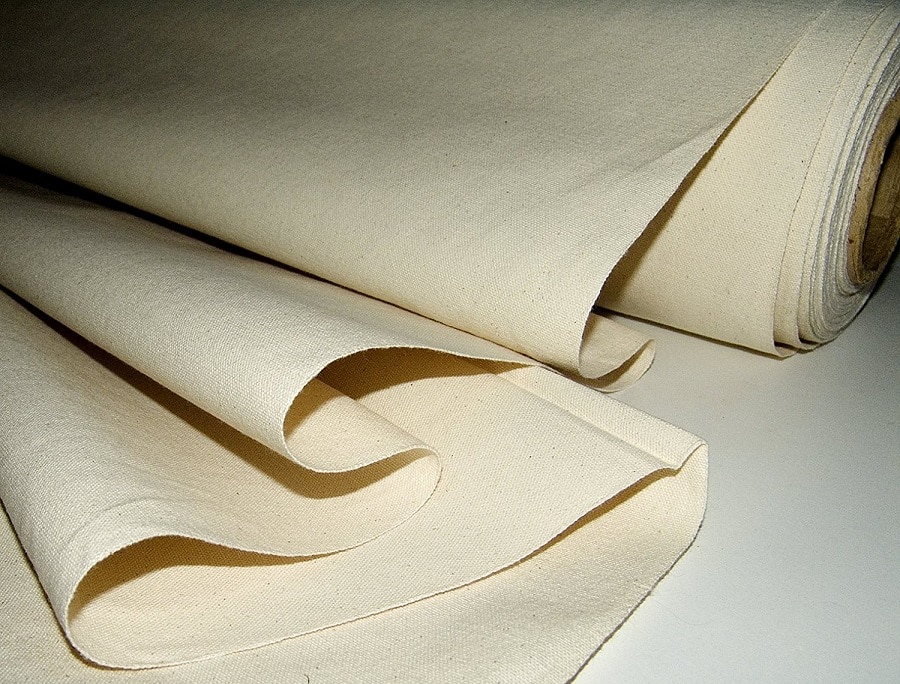
However, it will not insulate when wet and takes a long time to dry, so it may not be the best option if you’re expecting rain or snow, or even if you think you might sweat a lot. You can get water resistant down, however, this is generally expensive and still doesn’t perform as well as synthetics in wet conditions.
| Advantages: ●Excellent insulating properties ● Very light ● Packs down very small | Disadvantages: ● Ineffective when wet ● Takes a long time to dry
|
Synthetic fiber fill is the white fluff you find when you rip open many jackets or stuffed toys. It mimics down in that it provides good – though perhaps not as effective – insulation. On the plus side, garments with fiberfill dry quickly and provide good insulation even when wet, and do not absorb too much moisture.
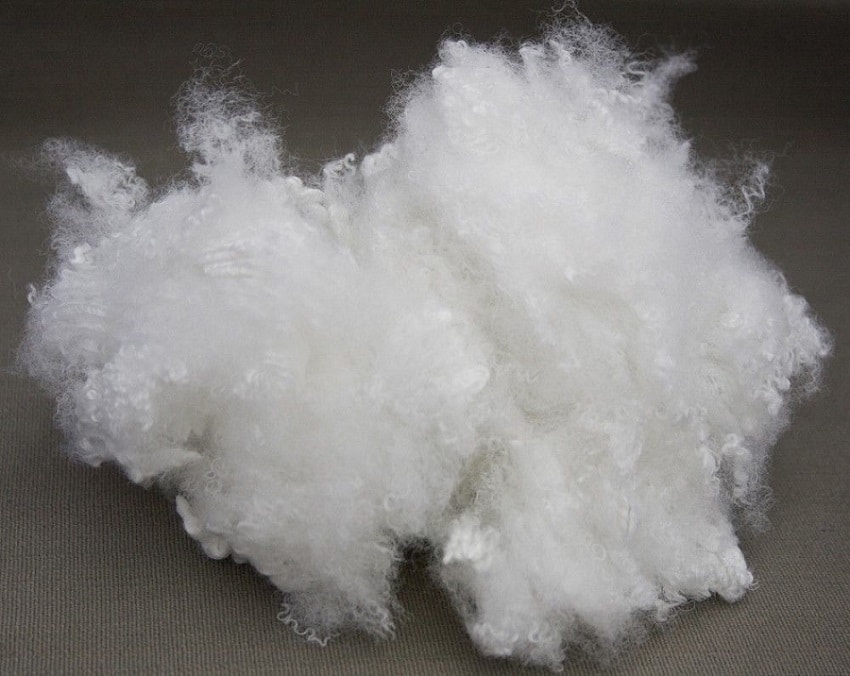
It is generally less expensive than its natural counterpart, and there are some fantastic premium brands to look out for such as Thinsulate and Thermolite. The thickness is not always an indicator of warmth, with superfine fibers making warm, but smaller jackets. Ideal for an insulating mid layer.
| Advantages: ● Dries quickly ● Moisture resistant ● Effective when wet ● Cheap | Disadvantages: ● Not as effective as down ● Heavier than down ● Doesn’t pack up as small as down
|
Of course, a number of materials can be combined to form effective clothing and to list them all here would take a long time and a lot of unnecessary information.
Putting The Pieces Together – Layering in Different Situations
Now that we’ve seen the various materials used as well as the basic principles of wearing layers, we can look at how best to put everything together, in order to be dressed appropriately for any situation we may find ourselves in.
A good rule of thumb is to always wear one layer more than you think will need. Basically, you are covering yourself in case the weather turns against you. It is better to carry an item of clothing you might not need rather than find yourself cold and wishing for that extra jacket, and in some cases, it might just save you.
Dressing for warm conditions
You may not think it necessary to wear layers when the sun is blazing. Surely a t-shirt will suffice? However, you may soon find that that t-shirt is pretty sweaty. By choosing the appropriate layers that will wick away any sweat, and keep cooler air in, you will find yourself more comfortable.

Long sleeves and pants may not be desirable but can help against exposure to the sun or insects. A wide brimmed hat is also useful.
For warmer weather and short excursions consider the following layer system:
- Base: A thin, long or short sleeved base layer, made from merino wool or a synthetic material with a zipped neck.
- Mid: (optional) if you think you will be out after sunset when temperatures drop, consider taking a mid-weight, loose fitting wool hoodie.
- Outer: Lightweight, soft shell jacket with a wind resistant membrane. This should be enough to keep you dry if rain comes unexpectedly, and will keep the cool air between it and the base layer, helping to keep you cool.
If you plan on a day-long hiking trip or are headed to the mountains during sunny conditions – remember anything can happen in the mountains – be prepared:
- Base: A thin, long or short sleeved base layer, made from merino wool or synthetic material with a zipped neck.
- Mid: A mid-weight fleece with a zipped neck.
- Outer: Soft or hard shell jacket, but strongly consider the hard shell if heading for the mountains.
- Pants: Consider taking a pair of rain pants, these pack up small and can save you walking around in soggy shorts all day.
If partaking in a multi-day hike, consider swapping the mid layer for an insulated jacket, which is more versatile than a fleece.
For more energetic activities such as sports that are not going to last too long think about wearing a thin base layer with excellent wicking properties, such as a performance shirt, with a light weight, fairly loose fitting shirt on top. This will ensure that sweat will not stick to your skin and ensure appropriate air circulation to keep you cool.
Dressing for cold conditions
At the tail end of fall, winter and the start of spring, conditions drastically change, generally becoming colder, wetter and more dangerous. This doesn’t mean that you should stay inside to stay warm. On the contrary, some areas are fantastic in the winter, and any mountain range is transformed by a layer of snow.

Of course, you simply may not have a choice and will need to go out to brave the elements. Either way, wearing layers is essential in the colder months when out and about. Generally, four layers work best in such conditions, paired with a warm hat that will cover your ears and a good pair of gloves.
- Base: long sleeves and long pants made of wool or synthetic material work Choose thinner materials if you’re expecting to exert a lot of energy, thicker if not.
- Mid: Light to mid-weight fleece, remember that thicker isn’t always better. A thinner fleece improves mobility and moisture wicking.
- Mid/insulation: A fairly lightweight insulated jacket, with either synthetic or down filling depending on the conditions you expect to encounter. If you believe you’re unlikely to face rain, a natural down insulator will be more lightweight, less bulky and warmer, however, a synthetic filling will work better in wet conditions.
- Outer: A hard shell outer jacket is essential if you’re expecting rain or snow. Choose one with a breathable membrane such as Gore-Tex for more comfort.
For extreme conditions and expeditions into the mountains lasting several days:
- Base: Long sleeved, fairly thin woolen or synthetic top and long, thicker pants. An inner glove, made of merino wool is also worth considering.
- Mid: Mid-weight fleece
- Mid/insulation: mid-weight insulated jacket with a hood and water and wind resistance. Consider a water resistant down filling and a Gore-Tex outer.
- Outer: A hard shell jacket and pants, water and windproof and breathable. Consider a thick insulated hat with ear protection, a thin and thick balaclava and neck protection.
With these rough guidelines in mind for the more extreme ends of the spectrum, it is easy to adapt to the transition seasonal weather and climates. Add or remove layers as required, and remember, you do not need to keep all of the layers on at all times. The key to regulating your body temperature is by removing or adding layers as required.
Wrapping it All Up
With this is mind you are now prepared to protect yourself against the elements far more effectively and efficiently.
[the_ad_group id=”23″]
You should have all the information you need to start preparing a set or two of emergency clothes, not only for yourself but also for your family.
It’s all too common to see children shivering and suffering because they haven’t been adequately dressed in layers of clothes.

Remember the following key points:
- Think of yourself as an onion, capable of removing layers or adding them to regulate your body temperature.
- Thickness doesn’t always mean more warmth.
- Consider the materials for each layer carefully for your needs – for example, if you’re likely to be active, even in extremely cold climates, a thin, woolen base layer will suffice, as long as the other insulating layers are the correct size and material.
- Remember the role each layer plays, be it the moisture wicking base, the insulating and breathable mid layer(s) or the sturdy outer shell layer, keeping you dry and windproof.
- Think ahead and prepare for the worst, always take one more layer than you think you will need, as well as replacement dry clothes, in case your first set get soaked.
- Don’t overdo it, wearing ten layers, even in the coldest conditions is just going to make you look like the abominable snowman, although, far less agile most likely.
- Dress appropriately for the conditions, there’s no point in wearing four layers if you’re just popping to the shops on a sunny day!
Now all that is left to do is layer up and get out there, whatever the weather and enjoy your new found comfort and protection. If you have a favorite layer system or a particular set of clothes, please share with us in the comments section.


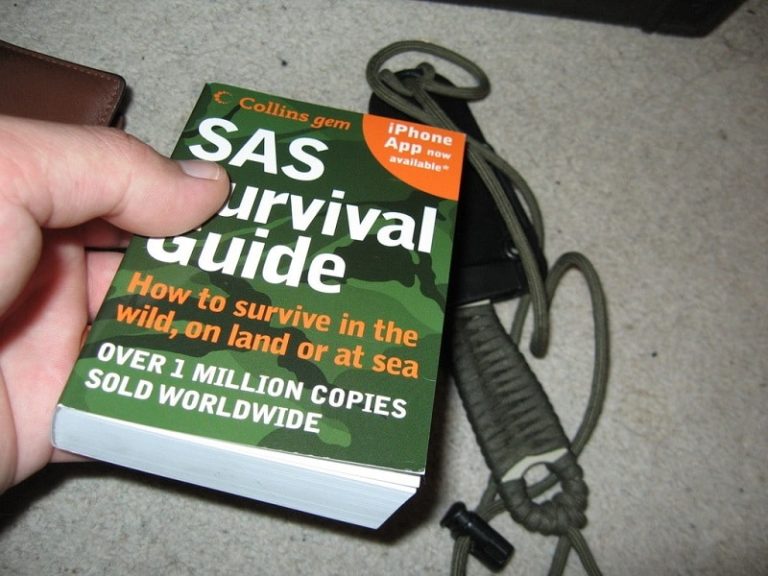
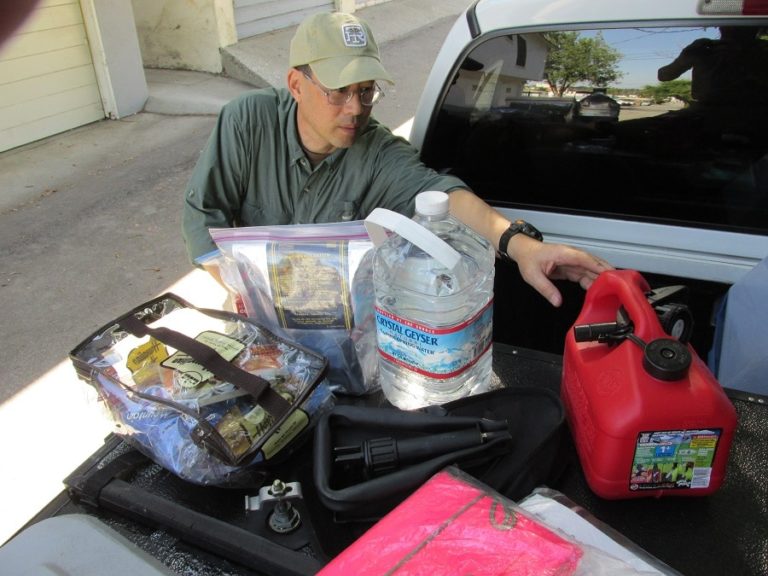
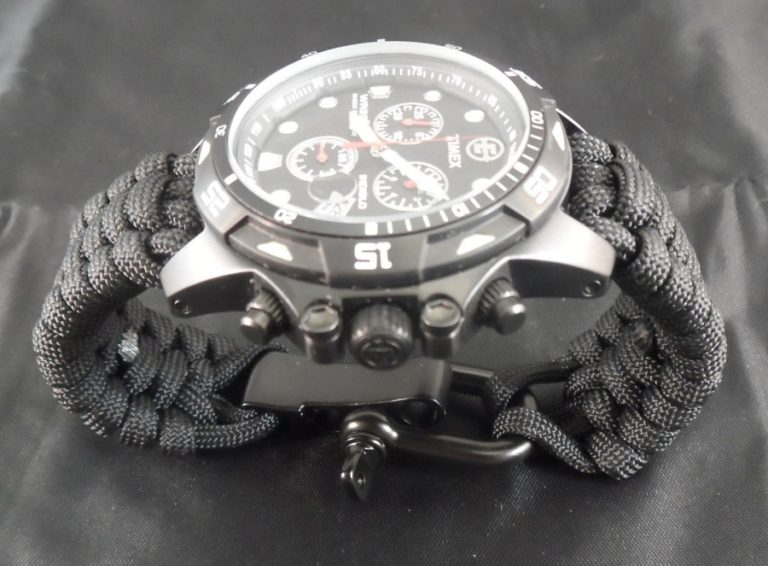
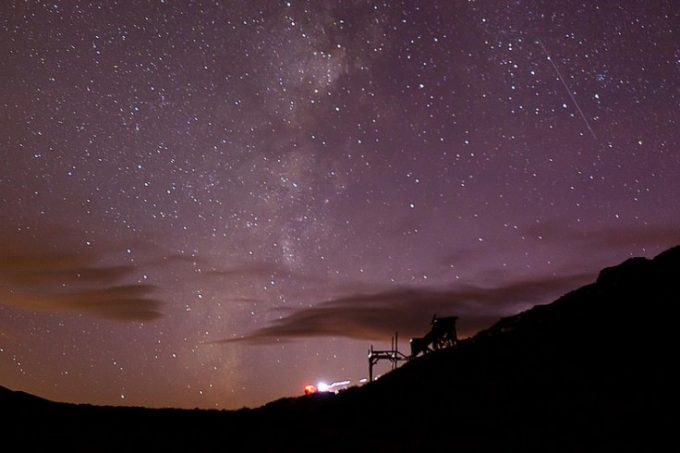
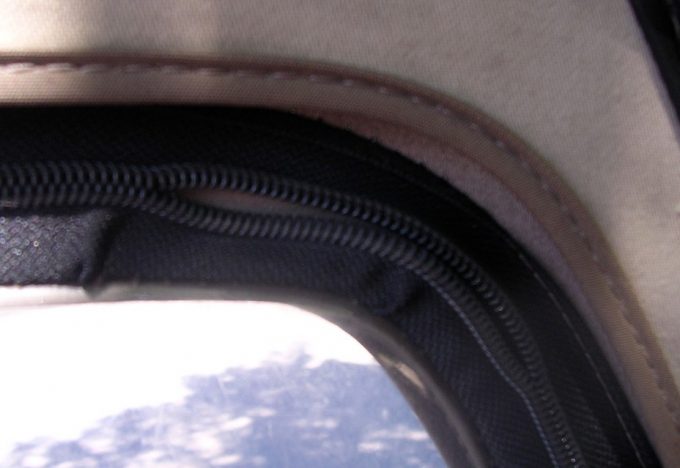
I personally, find the mid-layer is perhaps the most difficult one to get right, as an avid backpacker and hiker, I find that much of my time outside is rather active and I’m prone to sweating, thus anything synthetic tends to start smelling very quickly (even when treated). After years of trying various combinations, I eventually settled on a merino base and mid layer, though this can cause a little friction, which can result in static, I find this to be the best combo, it’s breathable, it’s warm, and it doesn’t smell.
Mid-layer portion is the trickiest part because it acts as the membrane that separates external elements and the circulation of the skin. It also is the layer responsible for ensuring that sweat is properly dispersed and not just hanging around the inner layer.
I personally, find the mid-layer is perhaps the most difficult one to get right, as an avid backpacker and hiker, I find that much of my time outside is rather active and I’m prone to sweating, thus anything synthetic tends to start smelling very quickly (even when treated). After years of trying various combinations, I eventually settled on a merino base and mid layer, though this can cause a little friction, which can result in static, I find this to be the best combo, it’s breathable, it’s warm, and it doesn’t smell.
Mid-layer portion is the trickiest part because it acts as the membrane that separates external elements and the circulation of the skin. It also is the layer responsible for ensuring that sweat is properly dispersed and not just hanging around the inner layer.
Though a little on the pricey side, anything made by Icebreaker is usually great for camping or hiking in cold weather. Their products are all made from Merino wool so they’re soft on the skin, non-itch and extremely warm.
In my humble opinion, I think wool is always better than synthetic materials, it breathes better, doesn’t start to smell as quickly and is still able to retain heat when wet.
Icebreaker products are indeed a little pricey but they are very much worth it as its items are made of high-quality genuine material. When a clothing article is made of high-quality items, their effectiveness in promoting circulation and warmth is pretty much guaranteed.
Though a little on the pricey side, anything made by Icebreaker is usually great for camping or hiking in cold weather. Their products are all made from Merino wool so they’re soft on the skin, non-itch and extremely warm.
In my humble opinion, I think wool is always better than synthetic materials, it breathes better, doesn’t start to smell as quickly and is still able to retain heat when wet.
Icebreaker products are indeed a little pricey but they are very much worth it as its items are made of high-quality genuine material. When a clothing article is made of high-quality items, their effectiveness in promoting circulation and warmth is pretty much guaranteed.